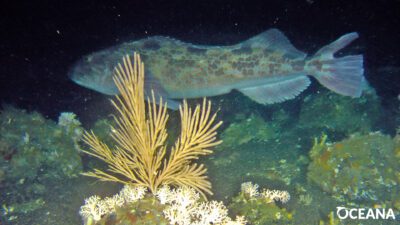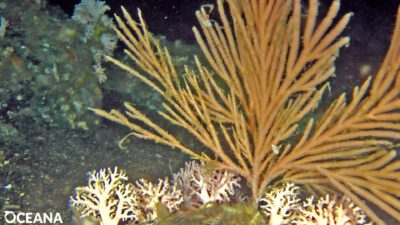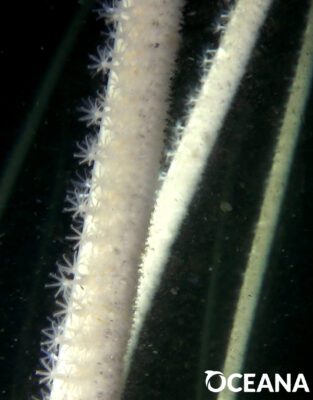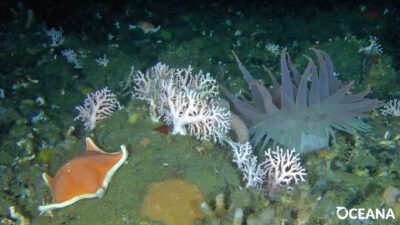Oceana’s Gulf of Alaska Expedition Finds Ocean Teeming With Life
Expedition to support Oceana’s campaign to protect corals and other habitats from destructive bottom trawling
Press Release Date: June 1, 2022
Location: Kodiak, AK
Contact:
Jamie Karnik | email: jkarnik@oceana.org | tel: Jamie Karnik

Oceana researchers spent eight days circumnavigating Kodiak Island exploring 23 different sites in search of deep-sea corals and other seafloor habitat areas. Throughout the expedition, we encountered an ocean teeming with life from the surface to the seafloor.
The expedition’s goal was to expand our knowledge of the Gulf of Alaska seafloor to support Oceana’s ongoing campaign to protect sensitive and essential seafloor habitats from destructive bottom trawling.
Bottom trawling is a type of industrial fishing where large, heavy nets are dragged for miles along the seafloor to catch species like flounder or cod, but these nets also destroy corals and other important habitats essential for fish and ocean life for nurseries, feeding areas, spawning areas, and as places to hide from predators.
While some discrete areas are protected, hundreds of thousands of square miles in the Gulf of Alaska remain open to bottom trawling and most of the seafloor habitat remains unexplored.
Initial Expedition Highlights
Corals on Albatross Bank

Oceana researchers discovered striking coral gardens on Albatross Bank, an area south of Kodiak Island in the open Gulf of Alaska. To our knowledge this is the first time this area of the seafloor has been photographed.
This area is still open to bottom trawling.
Sea Whips and other Habitats in King Crab Trawling Closure

Large groves of sea whips, a soft coral, were found in an area closed to bottom trawling to protect king crab. Sea whip groves provide vertical structure in soft sediments on the seafloor and are used by fish and invertebrates to hide from predators.
The same area also had other organisms like sea pens, another type of coral that grows in soft bottom areas. Sea whips and sea pens are essential habitat as they can often be the only vertical structures in soft or sandy areas.
Abundant Life at Every Site

Every expedition site was filled with life. At the surface researchers observed feeding humpback and fin-whales, large groups of black footed albatross, Laysan albatross, tufted puffins, pupping northern sea otters, Steller sea lion haulouts and a single juvenile northern fur seal, a rare sighting in the open Gulf of Alaska.
Beneath the waves the water column was teeming with krill, squid, copepods, jellies and other small organisms, many of which are food for fish and marine life.
On the seafloor there was a striking diversity of life. Hydrocorals, sponge beds, brittle stars, anemones, sea cucumbers and countless other animals were observed spread across boulders, cobblestones and other seafloor areas.
All of this observed life is interconnected. The corals, sponges and other seafloor structures provide habitat for fish to feed, breed and hide from predators. Small organisms like krill or squid serve as food for fish like herring or salmon. These fish are food for the birds, mammals and other life observed at the surface.
Damaged and Destroyed Coral
Coral habitats on the offshore banks targeted by the trawl fleet are at risk of destruction. We observed coral rubble in flat, hard bottom habitat in areas still open to bottom trawling. The same areas have records of coral bycatch noted by fishery observers on trawl vessels.
The National Marine Fisheries Service and the North Pacific Fishery Management Council are currently evaluating whether these types of habitats should be protected from bottom trawling. Oceana will present our findings to fishery managers in the coming months to advocate for conservation of these essential fish habitats.



